The festive season is upon us, and with it comes the enchanting sparkle of lights, the inviting scent of pine, and the joy of decorating. But have you ever paused to consider the hidden impact of our beloved holiday traditions on the planet? From glitter-laden baubles that shed microplastics to energy-guzzling lights and single-use wrapping paper, traditional Christmas decor often comes with a significant environmental footprint. This year, imagine a different kind of magic – one that’s just as beautiful, deeply meaningful, and kind to Mother Earth. Welcome to the wonderful world of eco-friendly Christmas decor. It’s about celebrating with intention, creativity, and a touch of sustainable sparkle that leaves a positive legacy long after the last carol is sung.
Embracing an eco-conscious Christmas doesn’t mean sacrificing beauty or tradition. Quite the opposite! It’s an opportunity to get creative, connect with nature, and imbue your home with unique, handcrafted charm that disposable decor simply can’t match. We’re talking about transforming your festive spirit into a force for good, one sustainable ornament and energy-saving light at a time. So, grab a warm mug of cocoa, and let’s dive into making your home a haven of sustainable cheer this holiday season.
The Environmental Impact of Festive Cheer


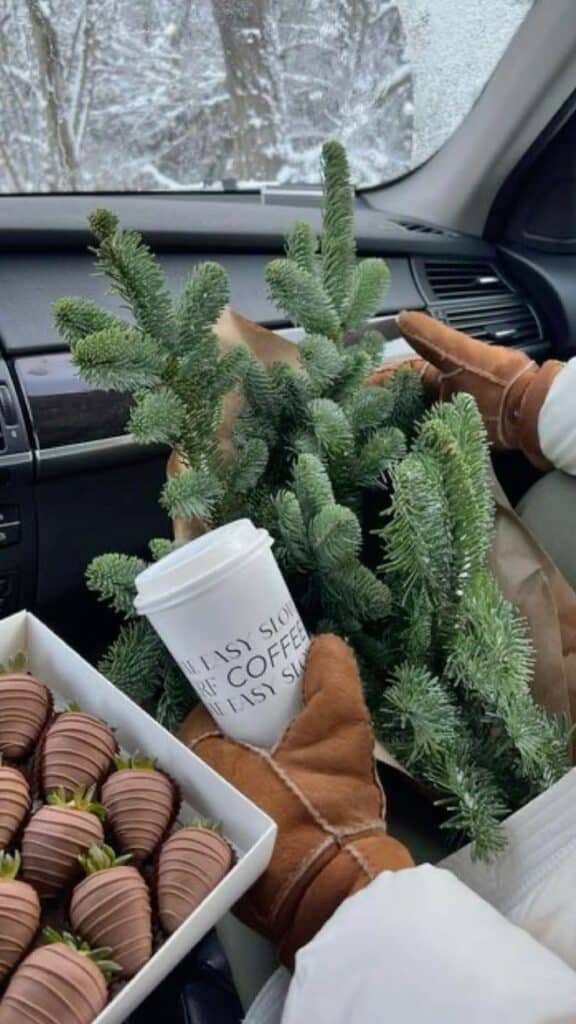
Before we dive into the fun stuff, let’s briefly touch on why eco-friendly decor matters. Christmas, while joyful, can be surprisingly resource-intensive. Think about it:
- Plastic Overload: Many mass-produced ornaments, garlands, and tinsel are made from non-recyclable plastics. They break easily, shed microplastics, and often end up in landfills after just one or two seasons.
- Energy Consumption: While LEDs have made strides, millions of conventional incandescent Christmas lights still consume vast amounts of electricity, contributing to carbon emissions.
- Deforestation and Unsustainable Sourcing: The demand for fresh trees and natural greenery can lead to unsustainable forestry practices if not sourced responsibly. Plus, the transport of these items also carries a carbon cost.
- Waste, Waste, Everywhere: Wrapping paper, gift bags, ribbons, and disposable table settings contribute significantly to landfill waste, with estimates suggesting household waste increases by 25% during the holiday period.
But don’t despair! Understanding the problem is the first step towards being part of the solution. By making conscious choices, we can deck our halls sustainably and celebrate without compromising our planet’s future.
Sustainable Sourcing: Your Christmas Tree and Greenery
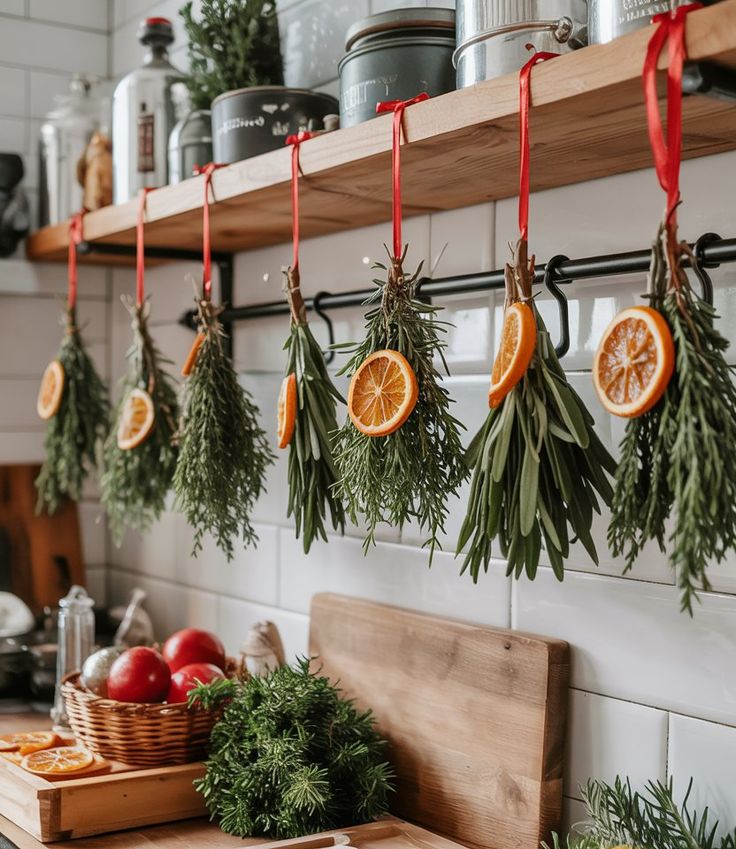
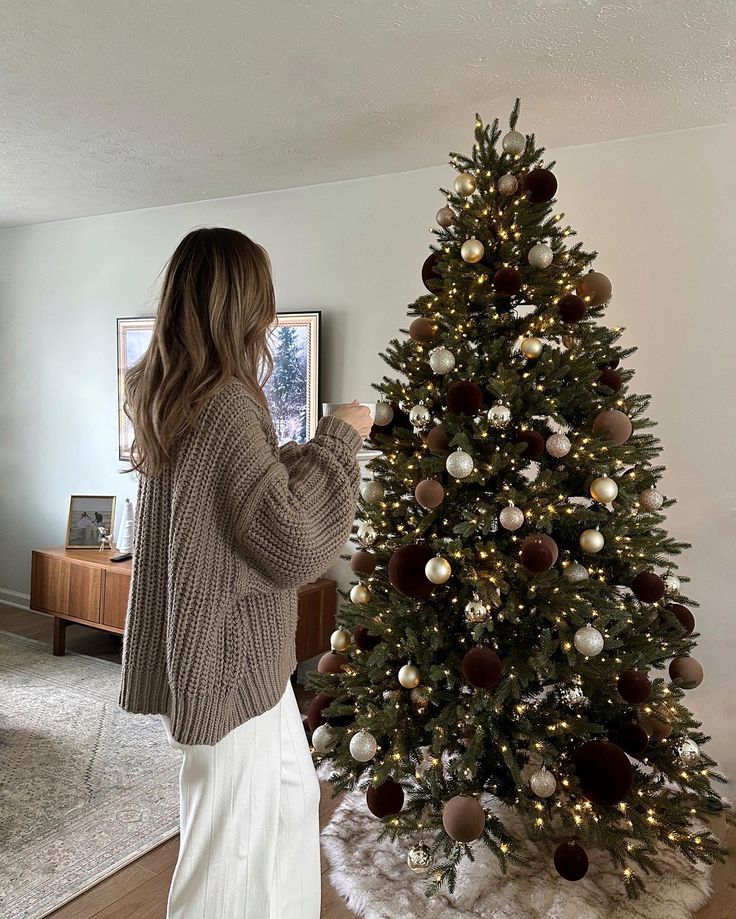
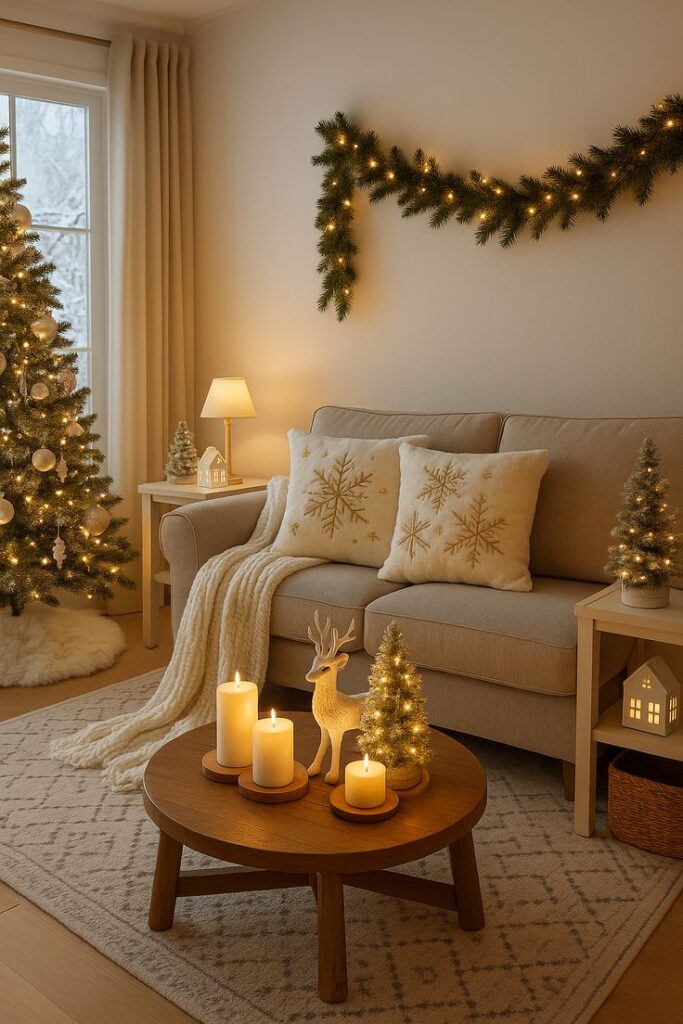
The Christmas tree is often the centerpiece of our festive decor. Choosing an eco-friendly option here makes a huge difference.
Real vs. Artificial Trees: A Green Debate
For years, the debate has raged: which is better for the environment, a real tree or an artificial one?
- Real Trees (Responsibly Sourced): When grown on sustainable farms, real trees absorb carbon dioxide, support local economies, and are biodegradable. Look for certifications like the Forest Stewardship Council (FSC). After the holidays, many communities offer tree recycling programs where they’re chipped for mulch or used for soil erosion projects.
- Potted & Living Trees: The ultimate green choice! Purchase a potted tree that you can bring indoors for the holidays and then plant in your garden or a local park afterward. Just remember to keep it well-watered and not keep it indoors for too long (typically no more than 7-10 days) to ensure its survival.
- Rented Trees: Some innovative companies now offer Christmas tree rental services. They deliver a live potted tree to your home, and after the holidays, they pick it up and replant it. It’s a fantastic zero-waste option!
- Artificial Trees: While they avoid cutting down a tree, most artificial trees are made from PVC plastic (a non-recyclable material) and can contain lead. Their environmental footprint comes from manufacturing and shipping. To make an artificial tree eco-friendly, you would need to use it for at least 10-20 years to offset its initial impact. If you already own one, use it for as long as possible!
Foraged & DIY Greenery
Beyond the main tree, think about how you can incorporate natural elements.
- Responsibly Foraged Branches: If you have access to a garden or woods (with permission!), gather fallen branches, pinecones, and sprigs of holly or evergreen. These add an authentic, rustic touch.
- DIY Wreaths and Garlands: Create stunning wreaths and garlands using natural elements. Combine foraged branches with dried flowers, herbs, and ribbons made from natural fibers. This is a wonderfully creative project you can do alone or with family.
- Potted Plants: Instead of cut flowers, adorn your home with festive potted plants like poinsettias, cyclamens, or Christmas cacti. They brighten your home and can last long after the holidays.
Ditch the Plastic: DIY Ornaments and Decorations

This is where your creativity can truly shine! Say goodbye to flimsy plastic baubles and embrace unique, handcrafted pieces that tell a story.
Natural Elements are Your Best Friends
- Dried Citrus Slices: Thinly slice oranges, lemons, or grapefruit and bake them on low heat until dry. They make beautiful, translucent ornaments that smell amazing and can be composted afterward. String them together for a garland or hang them individually.
- Pinecones: Collect pinecones, clean them, and spray them with a natural sealant or simply leave them au naturel. You can add a loop of twine for hanging, or even dip them in eco-friendly glitter (made from plant cellulose).
- Cinnamon Sticks & Star Anise: Bundle cinnamon sticks with twine or glue star anise to ornaments for a fragrant and visually appealing touch.
- Nuts and Seeds: Walnuts, chestnuts, or even polished acorns can be charming additions.
- Popcorn & Cranberry Garlands: A timeless classic! String popcorn and cranberries together for a completely biodegradable and edible decoration (for the birds, if hung outdoors!).
Paper Crafts for Festive Flair
Paper is incredibly versatile and often recyclable or compostable.
- Paper Snowflakes & Stars: Simple yet elegant, paper snowflakes are a timeless craft. You can make more elaborate 3D stars or folded paper ornaments.
- Paper Chains: A classic from childhood, paper chains are easy to make from recycled paper, old magazines, or even leftover wrapping paper.
- Origami Ornaments: For the more adventurous crafters, origami can create intricate and beautiful shapes.
- Cardboard Cutouts: Upcycle cardboard boxes by cutting out festive shapes like reindeer, bells, or angels. Decorate them with natural paints or markers.
Fabric Scraps & Upcycled Textiles
Don’t throw away those fabric scraps!
- Felt Ornaments: Felt is easy to cut and sew. Create little stockings, gingerbread men, or festive animals. Stuff them with natural fibers for a plump look.
- Rag Wreaths: Cut old fabric (like flannel shirts or cotton scraps) into strips and tie them around a wire frame for a cozy, rustic wreath.
- Patchwork Decorations: If you’re handy with a needle and thread, create small patchwork hearts or stars to hang.
- Knitted or Crocheted Baubles: For those with textile skills, knit or crochet covers for existing plain baubles or create entirely new soft ornaments.
Dough & Clay Creations
- Salt Dough Ornaments: A fantastic activity for all ages! Mix flour, salt, and water, roll it out, cut shapes, bake, and then decorate with natural paints. These are charming and long-lasting.
- Air Dry Clay: Mold natural air dry clay into festive shapes. Once dry, they can be painted or left in their natural state.
Looking for more hands-on ideas? Check out these 5 DIY Christmas Ornaments to Add to Your Tree in 2024 to get your craft on!
Sparkle Sustainably: Eco-Friendly Lighting Solutions

Lights are synonymous with Christmas. Making smart choices here can significantly reduce your energy consumption.
Embrace LED Technology
- Energy Efficiency: LED (Light Emitting Diode) lights consume up to 90% less energy than traditional incandescent bulbs. This not only saves you money on your electricity bill but also drastically reduces your carbon footprint.
- Long Lifespan: LEDs last much longer than traditional bulbs, meaning fewer replacements and less waste over time.
- Durability: They’re more durable and less prone to breaking, which is great for busy households.
- Cool to the Touch: LEDs produce very little heat, making them safer for use around flammable materials like dry Christmas trees and natural decorations.
Outdoor Lighting Goes Solar
For outdoor displays, solar-powered lights are a no-brainer. They charge during the day and automatically illuminate at night, costing you nothing in electricity and having zero emissions during operation.
Mindful Candle Use
- Soy or Beeswax Candles: If you love the warm glow of candles, opt for those made from natural soy wax or beeswax. These burn cleaner and are derived from renewable resources, unlike paraffin wax candles which are petroleum-based.
- Avoid Synthetic Scents: Many scented candles use synthetic fragrances which can release harmful chemicals. Choose naturally scented candles (e.g., with essential oils) or unscented ones.
- Rechargeable Batteries: For battery-operated lights, invest in rechargeable batteries to avoid constant disposal of single-use ones.
For more brilliant ways to light up your home, explore various Christmas Lighting Ideas.
Thoughtful Gifting and Wrapping
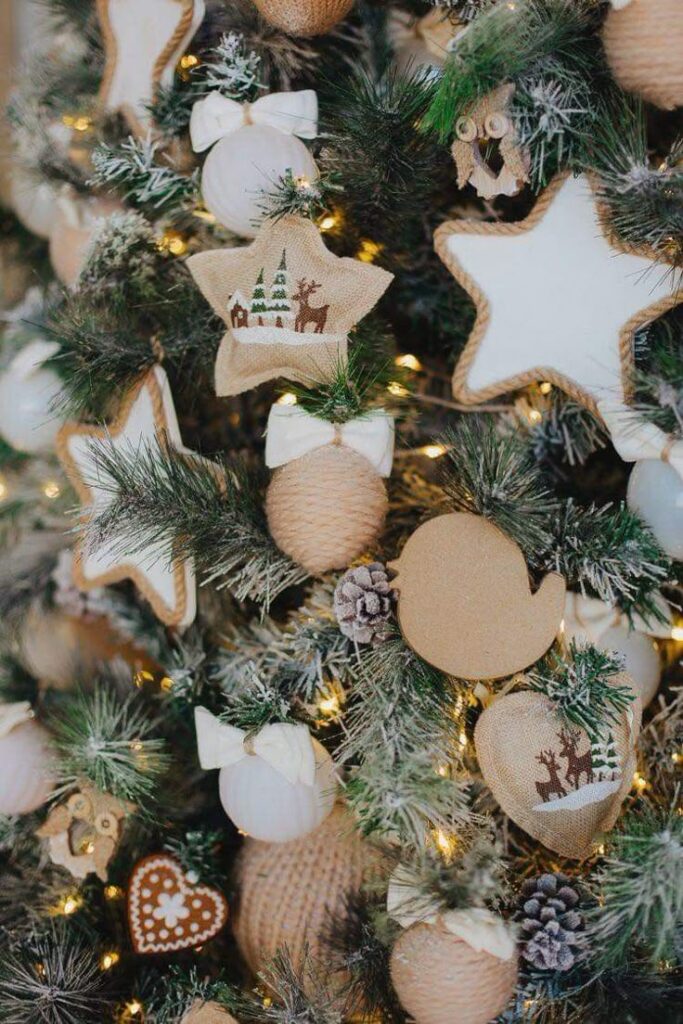


The joy of giving is central to Christmas, but the sheer volume of gifts and their associated packaging can be overwhelming. Let’s make it sustainable!
Gifts That Keep Giving (or Don’t Produce Waste)
- Experiences Over Things: Consider gifting experiences like concert tickets, cooking classes, spa days, or a weekend getaway. These create lasting memories without adding to clutter or waste.
- Handmade with Love: A handmade gift is often the most cherished. Whether it’s baked goods, a knitted scarf, or a piece of art, it shows genuine effort and care.
- Ethically Sourced & Sustainable Products: If buying gifts, choose products from companies committed to ethical labor practices and sustainable materials. Look for certifications or transparency reports.
- Second-Hand Treasures: Vintage finds, antique books, or well-preserved collectibles can be incredibly thoughtful and unique gifts. It gives an item a second life!
- Charitable Donations: For those who have everything, a donation in their name to a cause they care about can be a powerful gift.
Need inspiration for thoughtful presents? Check out ideas for Secret Santa Presents that can easily be adapted for an eco-friendly approach.
Wrap It Up, Sustainably!
Traditional glossy wrapping paper is often not recyclable due to plastic coatings, glitter, or dyes.
- Fabric Wrapping (Furoshiki): This Japanese art of wrapping gifts in reusable cloth is beautiful, elegant, and zero-waste. Scarves, tea towels, or fabric scraps can be used and then reused by the recipient.
- Recycled Paper & Newspaper: Brown craft paper, old maps, or even newspaper (especially the comics section!) make charming, rustic wrapping. You can decorate them with stamps, drawings, or natural elements.
- Natural Adornments: Instead of plastic bows and ribbons, use natural twine, jute, dried leaves, pine sprigs, or small pinecones.
- Biodegradable Glitter: If you simply must have glitter, opt for biodegradable versions made from plant cellulose, not plastic microparticles.
- Reusable Gift Bags: Invest in high-quality, reusable fabric gift bags that can be passed around for years.
- DIY Gift Tags: Make your own tags from recycled cardstock, old cereal boxes, or even dried leaves.
Upcycling and Repurposing: Giving Old Decor New Life
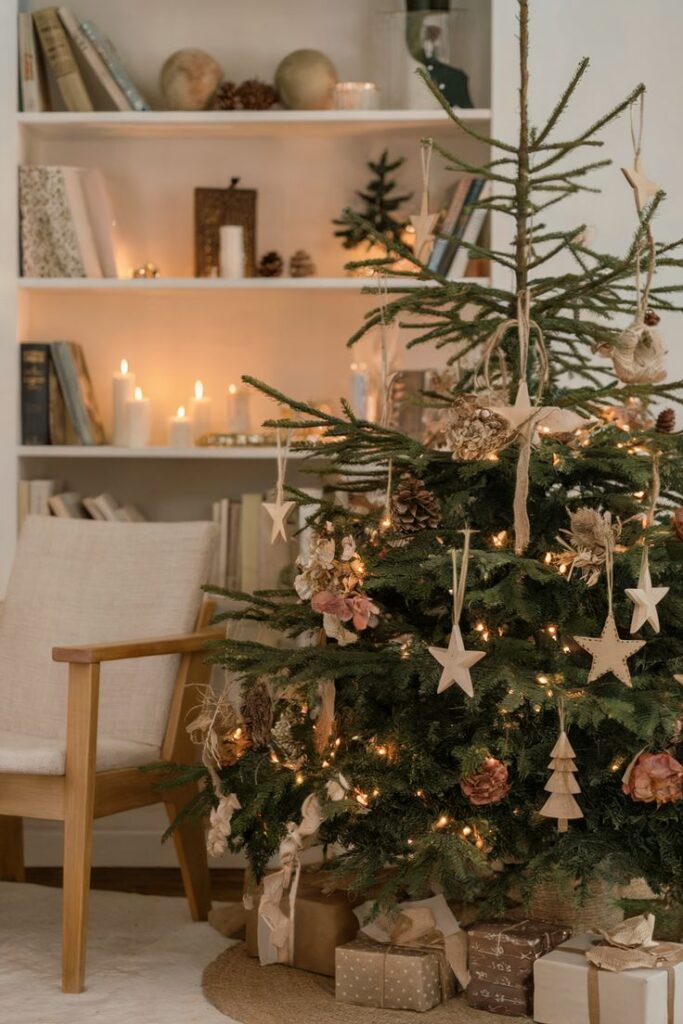

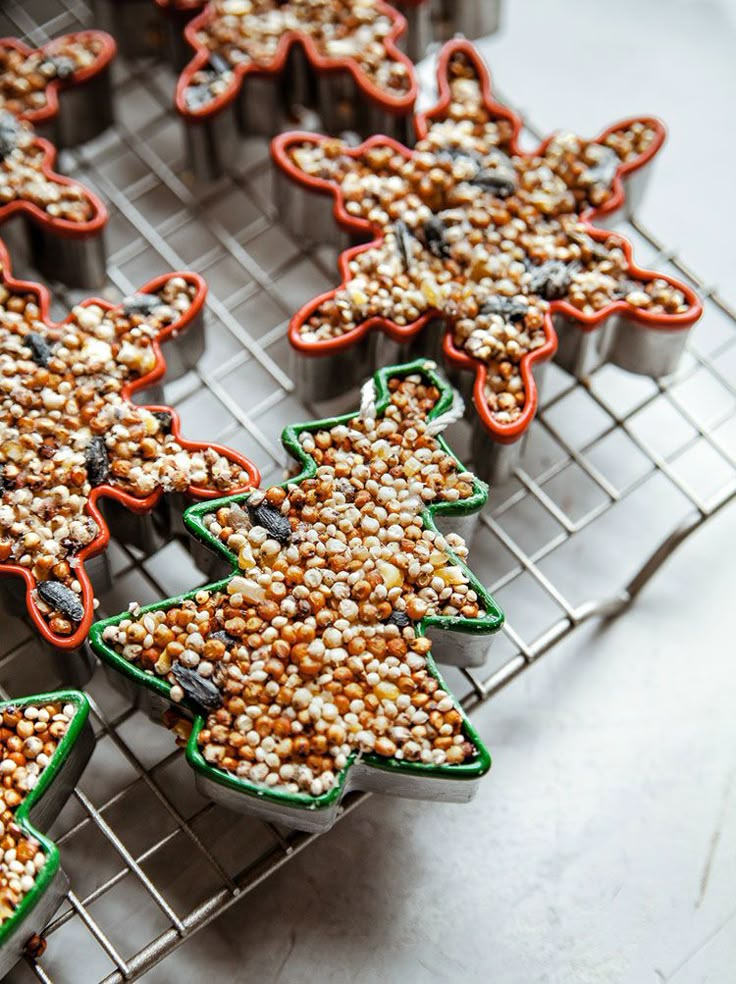
Before you buy anything new, look around your home. What can you transform? Upcycling is about turning old, discarded items into something new and beautiful.
- Refresh Old Ornaments: Got some plain or faded baubles? Give them a fresh coat of eco-friendly, non-toxic paint. You can even decoupage them with fabric scraps or dried leaves.
- Fabric Scraps to Festive Banners: Turn old bedsheets, tablecloths, or even worn-out jeans into festive banners or bunting. Cut out shapes, sew them together, and hang!
- Glass Jar Luminaries: Cleaned glass jars can become enchanting luminaries. Fill them with fairy lights (LED, of course!) or a natural soy candle. Decorate the outside with twine, natural foliage, or painted designs.
- Branches as Ornament Hangers: A sturdy branch can be suspended from the ceiling or placed on a mantelpiece to serve as a unique display for hanging ornaments.
- Broken Baubles into Mosaics: If an ornament breaks, don’t throw it away! Small pieces can be glued onto other items (like cardboard shapes or existing ornaments) to create a shimmering mosaic effect.
- Old Books into Decorations: Carefully fold pages of an old, unwanted book to create festive shapes, or cut out pages to make paper garlands or confetti.
Upcycling reduces waste, saves money, and gives your decor a unique, personal touch. It’s also a fantastic way to romanticize everyday life by finding beauty and purpose in what you already have.
Mindful Consumption: Less is More
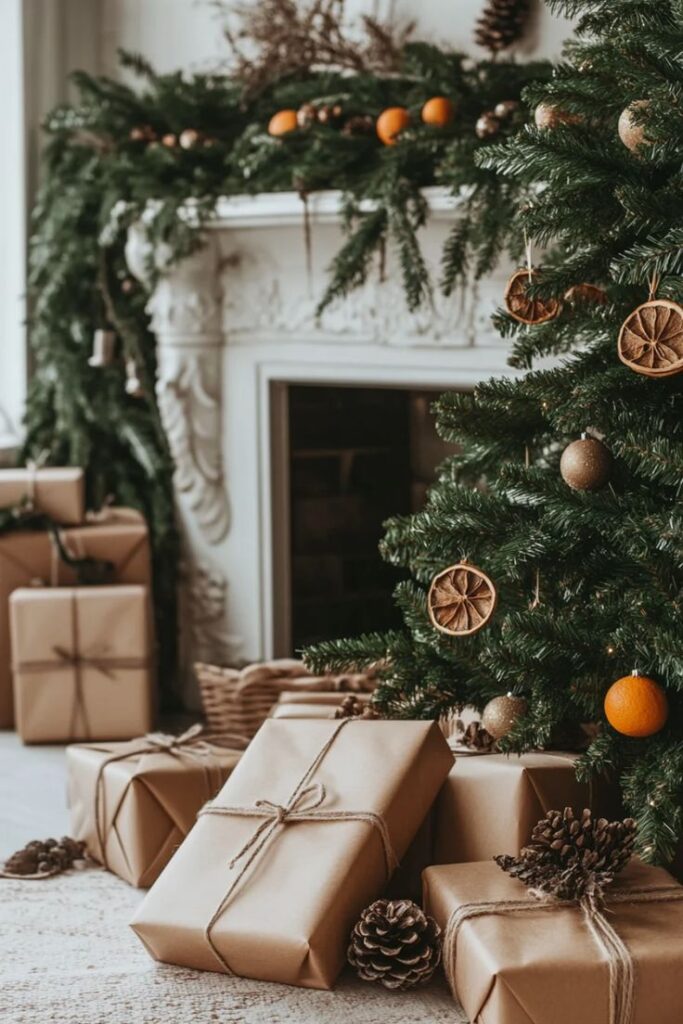
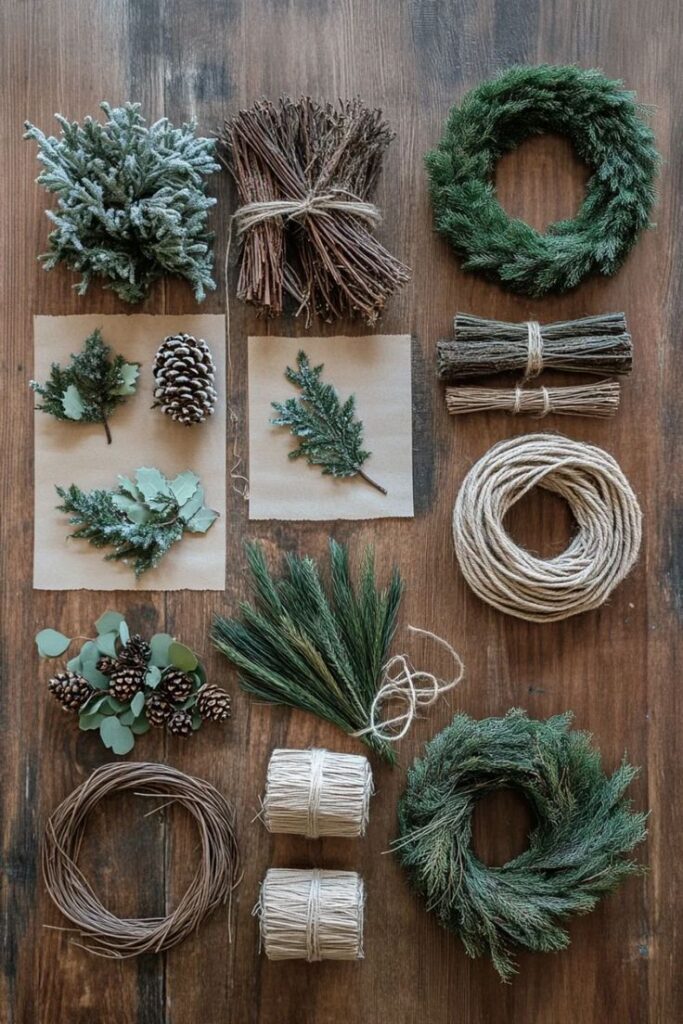
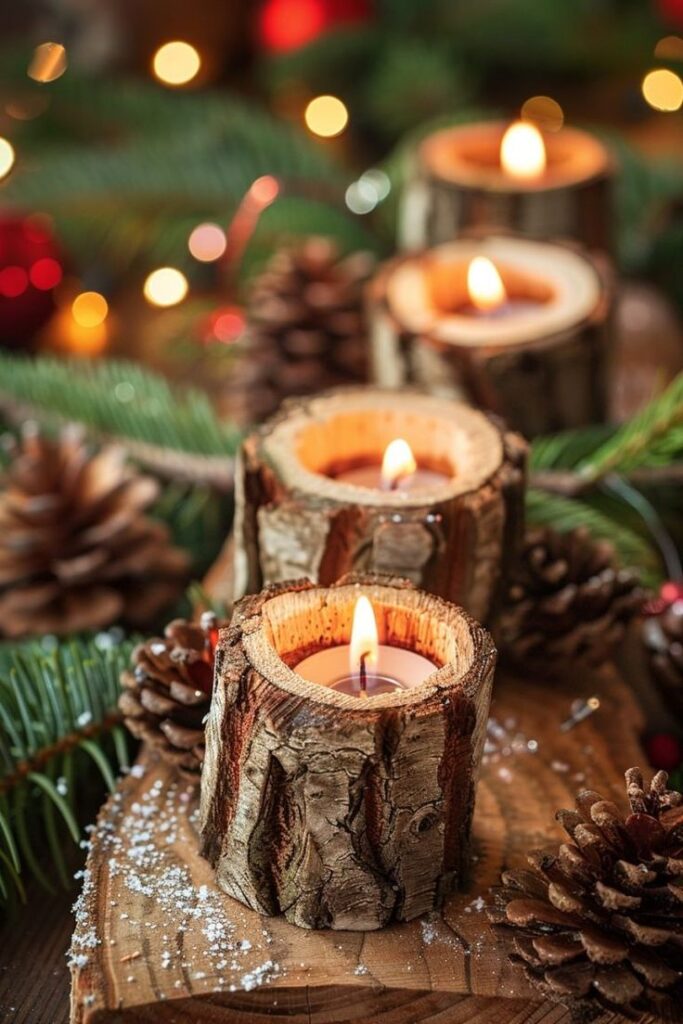
One of the most impactful ways to be eco-friendly is simply to consume less. This minimalist approach can also lead to a more peaceful and less cluttered holiday season.
- Quality Over Quantity: Instead of buying many cheap, disposable decorations, invest in a few high-quality, durable pieces that will last for years. Think wooden carvings, hand-blown glass (if sourced responsibly), or hand-stitched textiles.
- Second-Hand Treasures: Explore thrift stores, antique shops, or online marketplaces for unique vintage Christmas decor. You can often find beautiful, well-made items that have stood the test of time, giving them a new home.
- Borrow or Swap: Coordinate with friends or family. Perhaps you have too many fairy lights and they have extra wreaths? A decor swap can be a fun, free, and eco-conscious way to refresh your look.
- Focus on Nature: Sometimes, the simplest decorations are the most beautiful. A bowl of pinecones, a vase of holly, or a string of dried orange slices needs no plastic embellishment to be festive.
- Avoid Trendy, Disposable Items: Fast fashion extends to home decor. Resist the urge to buy into fleeting trends that will look dated next year. Stick to timeless pieces you truly love.
The Post-Holiday Cleanup: Responsible Disposal
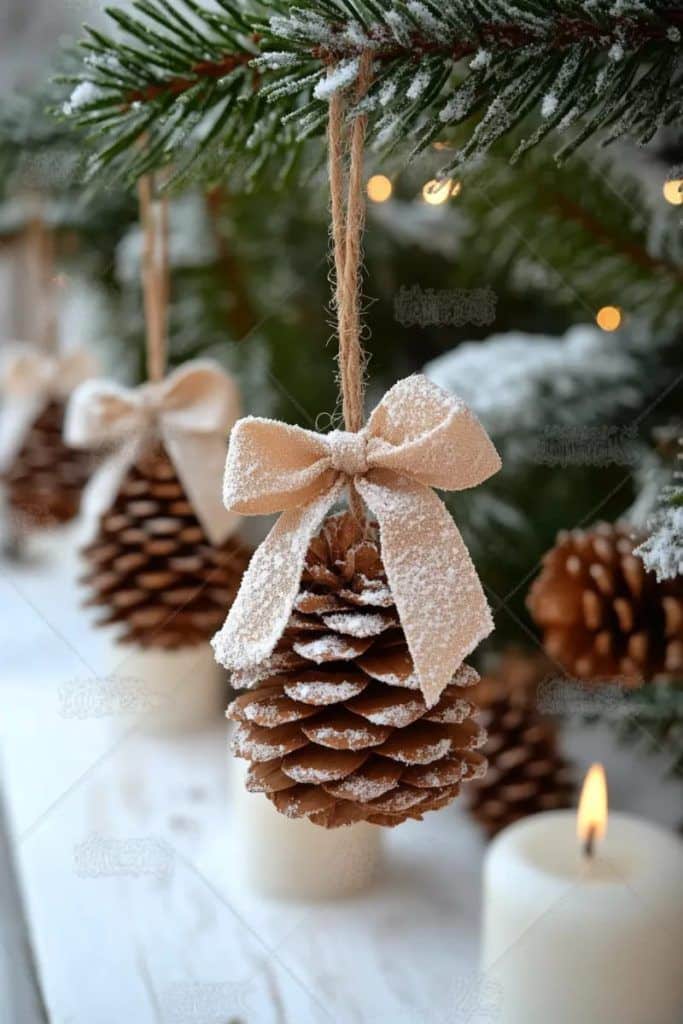


The festive season eventually winds down, and what you do with your decorations afterward is just as important as how you sourced them.
- Tree Recycling: If you opted for a real tree, research your local council’s tree recycling program. Most communities offer curbside pickup or drop-off points where trees are chipped into mulch for parks or gardens.
- Compost Organic Matter: Natural garlands, wreaths (without wire or plastic elements), and dried fruit can often be added to your home compost bin.
- Store Reusable Decor Properly: Invest in good storage solutions for your cherished eco-friendly ornaments and lights. Proper storage ensures they last longer, reducing the need for replacements. Use old cardboard boxes, reusable fabric bags, or plastic containers you already own.
- Recycle What You Can: Any paper wrapping that is truly recyclable (no glitter, foil, or heavy plastic coating) should go into your recycling bin. Cardboard gift boxes can also be recycled.
- Donate Usable Items: If you have decorations that are still in good condition but you no longer want them, consider donating them to local charities, schools, or community groups.
- Battery Recycling: Remember to properly recycle any non-rechargeable batteries used in your lights or decorations at designated collection points.
Embracing a Green Christmas Tradition

Adopting eco-friendly Christmas decor isn’t just about making individual choices; it’s about shifting mindsets and creating new, meaningful traditions.
- Make it a Family Activity: Involve children in collecting pinecones, making salt dough ornaments, or stringing popcorn garlands. These hands-on activities foster creativity, teach about sustainability, and create cherished memories. It’s a fantastic way to bond and reflect on 5 exciting things to do on Christmas Day in 2024.
- Connect with Nature: The process of seeking out natural elements for your decor encourages you to spend time outdoors and appreciate the beauty of the natural world, even in winter.
- Reduce Stress: A less consumer-driven, more mindful approach to Christmas can actually reduce holiday stress. You’re focusing on creativity, connection, and purpose rather than endless shopping and worrying about perfection.
- Inspire Others: Your beautifully decorated, sustainably minded home can inspire friends and family to consider their own festive choices. Lead by example!
Conclusion

Transforming your holiday decorations into an eco-friendly display is a powerful way to celebrate the season with a clear conscience and a creative spirit. It’s about more than just reducing waste; it’s about fostering a deeper connection to nature, supporting ethical practices, and infusing your home with authentic charm that store-bought items can rarely achieve.
By choosing sustainable trees, opting for DIY and upcycled ornaments, embracing energy-efficient lighting, and mindfully gifting, you’re not just decorating your home; you’re contributing to a healthier planet. This Christmas, let your decor be a testament to the magic of sustainability, proving that beauty, tradition, and environmental responsibility can joyfully go hand-in-hand. Make this holiday season not just merry and bright, but also wonderfully green.
Frequently Asked Questions


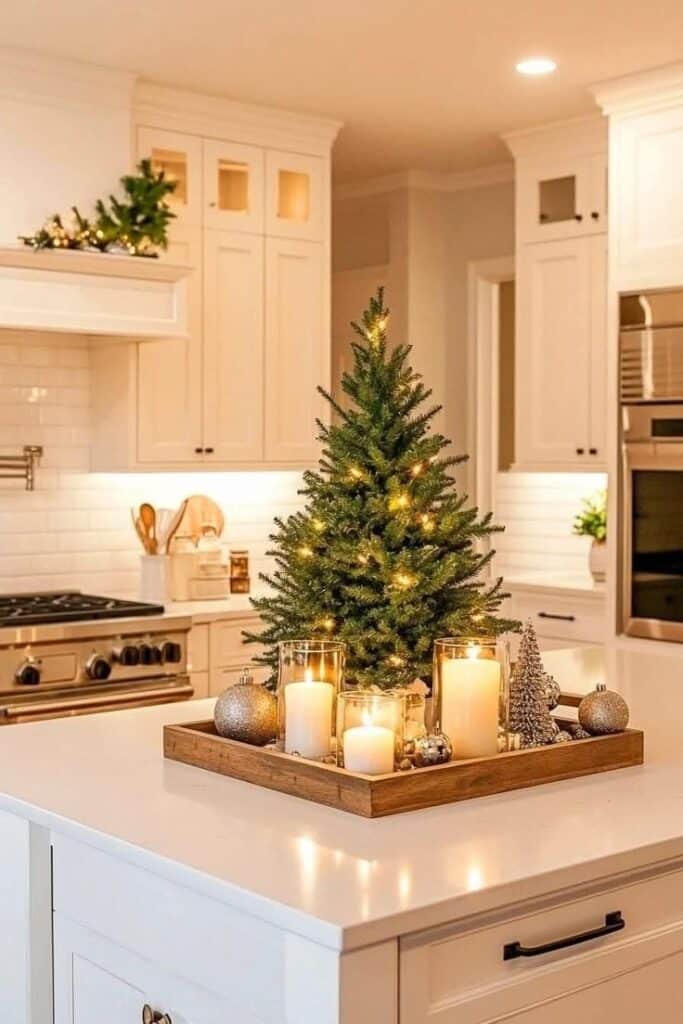
What are the main environmental impacts of traditional Christmas decor?
Traditional Christmas decor often contributes to plastic waste from non-recyclable ornaments and tinsel, increased energy consumption from conventional lights, potential deforestation from unsustainably sourced trees, and a surge in landfill waste from single-use wrapping paper and packaging.
How can I make my Christmas tree more eco-friendly?
Opt for a responsibly sourced real tree from a local, sustainable farm that offers recycling programs, or consider renting a living potted tree that can be replanted. If you have an artificial tree, commit to using it for many years to maximize its lifespan and offset its manufacturing footprint.
What are some easy DIY eco-friendly ornament ideas?
You can create beautiful ornaments from dried citrus slices, pinecones, cinnamon sticks, salt dough, paper snowflakes, or even upcycled fabric scraps. These options are often compostable or reusable and add a unique, personal touch.
How can I reduce energy consumption with my Christmas lights?
Switch to LED Christmas lights, which use up to 90% less energy and last much longer than incandescent bulbs. For outdoor displays, solar-powered lights are an excellent zero-emission choice. When using battery-operated lights, invest in rechargeable batteries.
What are sustainable alternatives to traditional wrapping paper?
Instead of traditional non-recyclable wrapping paper, use fabric wrapping (like Furoshiki), recycled brown craft paper, old newspapers, or reusable gift bags. Adorn gifts with natural twine, dried leaves, or small pinecones instead of plastic ribbons and bows.
Can I still have a festive look with eco-friendly decor?
Absolutely! Eco-friendly decor doesn’t mean sacrificing beauty. In fact, it often leads to a more unique, charming, and authentic aesthetic. By incorporating natural elements, handmade crafts, and timeless pieces, you can create a truly magical and sustainable festive atmosphere that reflects your personal style.






